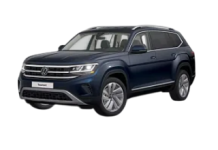
Have you checked the list of cars coming in 2018? In this way, you will understand why the industry must abandon some of its models in order to make room for what the market wants.
Some models were inevitably lost, some were sorely lacking, and others were doomed from the start. You decide which car belongs where.
Audi A3 with three doors — introduced in 1996
The three-door Audi A3 was discontinued this year, while the five-door Sportback continues its life. A 3-door version has been available since 1996, but the more popular sedan and planned liftback pushed the compact hatchback out of the market.
BMW 6 Series — produced in 1976 and 2004
Series 6 as we know it will no longer be available, but will continue to live in 2018 as Series 8. Meanwhile, the 6 Series will now be rolled out to the former 5 Series GT, which will now become the 6 Series GT. The 8 Series pushes further development of the 6 Series and there will even be an M8. Unfortunately, the 6 Series coupe and convertible remain indispensable.
Citroën C3 Picasso — introduced in 2009
The Citroën C3 Picasso, one of the many victims of the MPV sector in recent years, has succumbed to the pressure on the SUV segment. It was replaced by the C3 Aircross, a small SUV. He’s not one of the longest-lived models on this list. It was only introduced in 2009 and is one of the many discarded MPV models.
Citroën C4 — introduced in 2005
Production of the Citroën C4, a competitor to the Ford Focus and Renault Mégane, was halted this year to make way for the C4 Cactus, which has moved away from an SUV and into a more traditional hatchback. Initially, the C4 was offered with an interesting steering wheel with a fixed center section and five doors, or with an unusual three-door coupe. Later, it all became a completely traditional car.
Dodge Viper — introduced in 1992.
If that doesn’t bring tears, then nothing else. After 25 years of madness, the all-American V10 supercar finally rolled off the assembly line in 2017. From huge fiberglass coupes to more and more hardcore variants, the Viper will be sorely missed.
Ford B-Max — introduced in 2012
Another subcompact minivan that has suffered from the fashion for SUVs. The Ford B-Max was discontinued in the fall of 2017 as buyers preferred the Ecosport. The last few hundred vehicles will be sold through official Ford channels. C-Max is still on the market and will steal some of B-Max’s sales.
Honda Civic Tourer — introduced in 2014
The new Civic was introduced this year, and given that it’s 22cm longer and 3cm wider, it seems like Honda doesn’t feel the wagon version is necessary.
Mahindra e2o — introduced in 2016
Ah, Mahindra e2o. It began life in April 2016 as the comically grotesque heir to the less generous G-Wiz and ended 13 months later due to poor sales. Mahindra blamed Brexit for poor car sales, although we think the simple reason is the unusual design.
Mercedes-Benz B-Class Electric Drive — introduced in 2015
The Mercedes-Benz B-Class Electric Drive looked to the future, but its design was from the past. In terms of the future, an electric car has a range of 200 km, decent performance and all the qualities of a conventional B-class. On the other hand, finding an audience for a Mercedes MPV is never easy, especially given the limited battery range. Mercedes used a B-class electric powertrain this year to pave the way for its EQ line of electric vehicles.
Mercedes-Benz CLS Shooting Brake — Introduced in 2012
The Mercedes-Benz CLS Shooting Brake version was something of a pioneer. In a market where Mercedes had already sold the C-Class and E-Class, the manufacturer decided it was time for a third model, albeit with a sloping roof for more sex appeal at the expense of practicality. The price was high at £48,570, it was £10,000 more expensive than the E-Class wagon and had a smaller boot.
Skoda Yeti — introduced in 2009
Yeti was introduced in 2009 as an alternative to SUVs. It was distinguished by its original shape and interesting design, although it underwent a slight facelift. With the rapid growth of the market, Skoda has launched a new small SUV that is even more traditional to achieve further sales success. Although Skoda insists that the Karoq is not a direct replacement for the Yeti, there is no room left for a continuation of this model. The company decided not to carry the Karoq name, which reflects the larger Kodiaq SUV. «Yeti» has also proved to be a «sensitive» word in the very important Chinese market. However, production in certain markets will continue.
Toyota Auris diesel — introduced in 2007
Another sign of the times, the Toyota Auris is a small hatchback and station wagon with petrol and hybrid drive, but the diesel is already dead. Interestingly, Toyota says the diesel Auris was dropped not because of upcoming government tax increases, but because of slow sales of the Auris models. Of the 16,528 units sold in 2016, only 651 were diesel. Given the growth dynamics of diesel fuel sales in the industry, this figure is unlikely to increase.
Volkswagen Jetta — produced in 1979 and 2005
The Jetta has been on the market in one form or another since 1979, but the Vento between 1991 and 1998 and then the Bora until 2005 took some of the shine away. That all changed this year when the Jetta went on sale in the UK. Small sales — especially compared to those of the Golf and Passat — led to its withdrawal.
Volkswagen Scirocco — produced in 1974 and 2008
The sports car that was removed from SUVs? In this case, officially, yes: the T-Roc is something of an indirect replacement for the Scirocco, according to Volkswagen. With Scirocco sales of just 4,392 years compared to 57,770 Golf sales in January-November 2017 and an outdated platform, its end is inevitable. The fact that Volkswagen has already returned it once means it could be back again.









